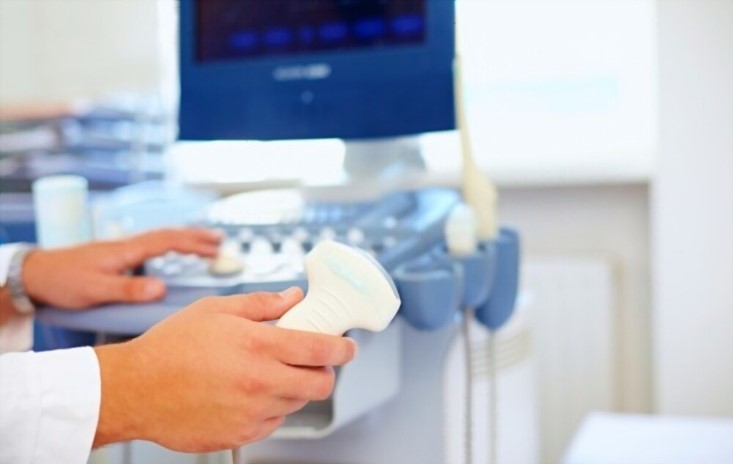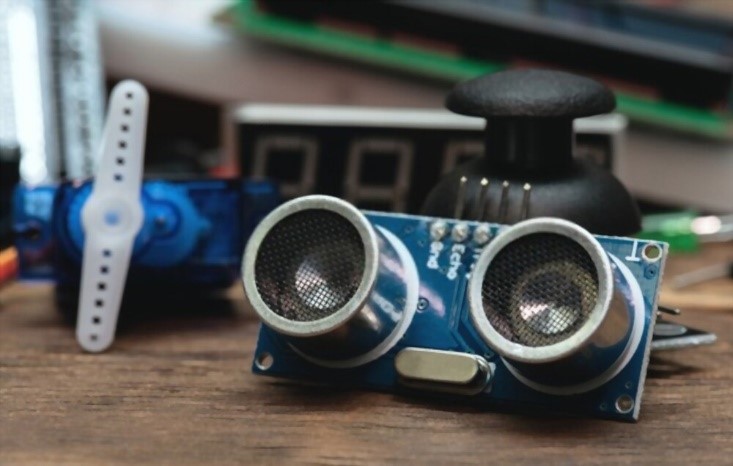Generally, a sensor is a module, device, machine, or subsystem that detects events as well as changes in the environment. The device then sends the information to another device or gadget. Sensors typically are used with other electronics and do not stand alone.
Sensors are used in innumerable everyday applications and can be found almost everywhere. They help to simplify processes and make them easier to do. They can be used to detect proximity, light changes, motion, temperature changes, etc. They are used in several fields including medicine, warehousing, automobiles, aeronautics, robotics, etc.
There are different kinds of sensors. Some of these are vibration detectors, refractive index sensors, light-dependent resistors and infrared. Others are computer vision setups, magnetic field sensors and ultrasonic sensors which are some of the best.
Ultrasonic sensing can be used to detect proximity and it comes with a high level of reliability. They work through the emission of sound waves towards a target object.
This frequency of the wave is higher than what the human ear can pick. The waves are then reflected and the distance traveled to and from the object is calculated based on the time. You can read more about them from this article.
How They Work

An ultrasonic sensor makes use of a transducer to send and receive ultrasonic pulses that relay information on an object’s proximity. The transducer acts like a microphone that sends and receives the sound waves. Most ultrasonic sensors use single transducers to send the pulse and also receive the reflected echo.
The sensor then uses the time lapse between when the pulse was sent to when it was received to calculate the distance. Ultrasonic sensors consist mainly of two components. These components are the transmitter and the receiver.
The transmitter is the component that emits the sound waves towards the targeted object. This is usually at a range of 23 kHz to 40 kHz and it is done using either electrostatic technology or piezoelectric crystals. The receiver is the component that receives the reflected pulse after it has traveled to and fro the target object.
The sensor can use a detached sound emitter and receiver but it is also possible to combine the two into one package. This means the element will alternate between sending and receiving signals.
Placing the transmitter and receiver side by side or integrating them into a unit helps to keep errors to a minimum. One reason for this is that the sound waves travel from the transmitter to the object and back in a straight line. This type of sensor may be ideal for manufacturing small packages especially in situations where size is an issue.
Ultrasonic Transducers
Ultrasonic sensors have transducers that work on the piezoelectric or electrostatic principle. They are made with flexible membranes that are conductive. The membranes rest on conductive and grooved back plates.
When a biased electric pulse is applied between the membrane and the back plates, it either moves towards or away from the plates. When an ultrasonic signal is applied, the membranes will vibrate and this generates sound waves in the air.
Although piezoelectric ones may offer better outputs, they have narrower bandwidths when compared to electrostatic transducers. Electrostatic ones are used mainly because of their wide bandwidth. You can also easily implement a huge aperture on them. They are precise and are comparable to capacitive microphones.
Electrostatic transducers also have flat responses on a range of wide frequencies. They have low ring-out properties and are non-resonant. For this reason, they are more sensitive by up to 40dB or more than piezoelectric ones.
Ultrasonic Sensor Strengths
Ultrasonic sensors are effective and have a high degree of precision. They do not have difficulty processing most kinds of materials. This is irrespective of its texture, color, or shape. They are not affected by these.
Nevertheless, if the object is made from a material that is sound absorbing, it can bring about unreliable readings. This may also be true when the shape of the object reflects the waves away from the receiver.
They are also not affected by the interference of gas and smoke unlike infrared systems although they may be slightly affected by heat. Specially adapted ones may be used underwater. However, because the speed of sound is 4.3 times faster in water, the distance calculations must be adjusted accordingly.
Uses and Applications
Because ultrasonic sensors use proximity, they are useful in self-parking technology and anti-collision safety systems. They are also useful in manufacturing and in helping robots detect obstacles. They are useful for detecting, monitoring and regulating the level of a liquid in a container.
In medicine, they are used for imaging as in the case of viewing internal body organs and for detecting tumors and cancers. It also helps to monitor babies and to ensure they are in perfect health while they are still in the womb.
In agriculture, they are used as a component in machines that are meant for spraying crops of differing heights. Also, for monitoring tank levels and irrigation systems. In the food and beverage industry, they are used for sensing the appropriate level of drinks in bottles.
Ultrasonic sensors are also useful for maximizing efficiency during production in manufacturing. They enhance the whole process through automation and safety. In warehouses, they are used for controlling stacking heights, counting, detecting people and loop control.
They are used in managing inventory, sorting, profiling and stacking boxes as well as logistical control. They help to increase the accuracy and simplicity of manufacturing processes.
Furthermore, they are used in unmanned aerial vehicles (UAVs) like drones to monitor objects in their path. This helps them to avoid crashing. They are also used in web-guiding systems and so many other applications. You can check out SensComp to read more about this and see popular products available.
Conclusion
Ultrasonic sensors are popular devices that use proximity detection to determine the distance of objects. They are relevant components that are used in various electronics, gadgets and machines. They are simple to build and come at low costs. All of these make them a great choice for use in products that require presence detection or measuring distances.






